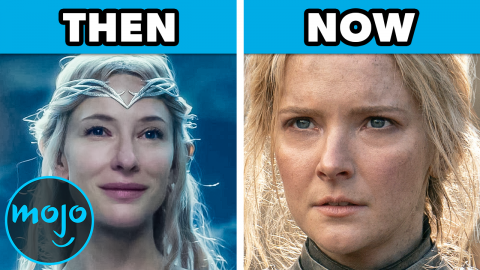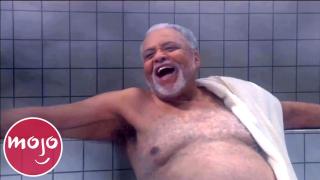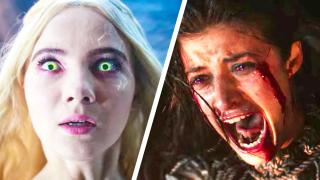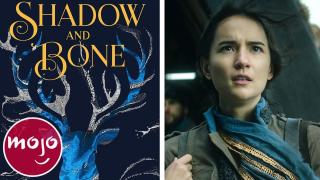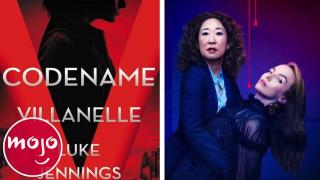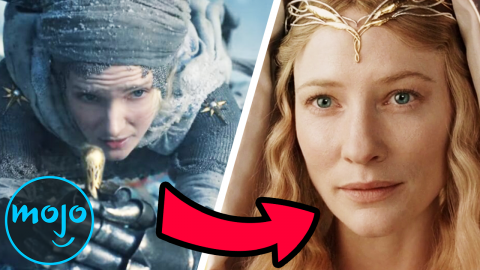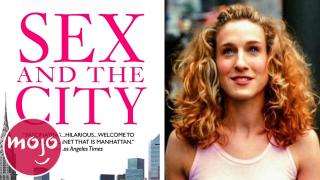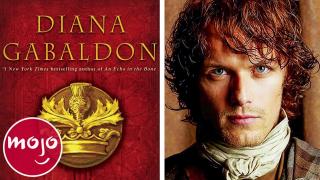Top 10 Differences Between The Rings of Power & The Books

#10: New Characters
Top 10 Differences Between The LOTR Movies and The Rings of Power
“The Rings of Power” tells an original story within the broad brushstrokes of Second Age history, based mostly on “The Lord of the Rings” appendices. Amazon was unable to secure the rights to other works like “The Silmarillion”. Tolkien’s writings on this period are collections of stories with an almost biblical feel rather than the conventional narrative of a novel. The show’s writers have filled the gaps with a new story and new characters, such as Nori, Arondir, Bronwyn, Theo, Disa, the Dweller, and ‘Halbrand’. Adar is also new, although the existence of an earlier Orc with Elven features makes some sense given their origin.
#9: Appearances
Top 10 Cameo Appearances That Didn't Have to Go THAT Hard
There’s a lot of argument over what Tolkien’s Elves looked like. Fun fact: some older Elves had beards. Tolkien doesn’t describe Elvish ears as pointed anywhere in the books, although remarks in his letters and notes might support the idea. There’s also debate over whether his Elves were explicitly all white. “The Lord of the Rings” appendices describe Elves as “fair of skin”; however, Tolkien’s son Christopher has clarified that this passage was intended to refer to Noldor Elves. The Elf Maeglin was described as “swart”, meaning “swarthy” (i.e. “dark-skinned”) in a draft, but elsewhere as “white”. “The Rings of Power” features pointy-eared Elves, and allows for different skin colors. There are also people of color in other races, such as Dwarves and Harfoots (whom Tolkien described as “browner of skin”).
#8: The Elves’ Departure from Valinor
Top 10 Differences Between The Witcher Show and Books
Do “omissions” count as “differences”? A show can only go so deep into backstory. But we love talking about Middle-earth history, so we’re going to include this one! In a brief sequence, the show touches on events in the First Age. We glimpse Valinor, and the Two Trees that Morgoth destroyed with Ungoliant before his theft of Fëanor’s Silmarils. We also see the Elves depart for Middle-earth and a battle that seems to combine elements of the Dagor Bragollach and the War of Wrath. However, the Elves’ departure wasn’t so simple in the books. In leaving, the Elves were defying the Valar, the holy spirits who shaped the world. And in an event known as the First Kinslaying, Fëanor’s Noldorin Elves killed Teleri Elves to steal their ships for the journey.
#7: The Creation of Mordor
Top 10 Differences Between Shadow and Bone Books & TV Show
In the First Age, Morgoth corrupted Men in the East, whose descendants “The Rings of Power” has dwelling in the ‘Southlands’. Although Morgoth created Mount Doom, his seat of power Utumno, and later Angband, lay far in the north. Only in around the year 1,000 of the Second Age did Sauron settle in Mordor, building his tower Barad-dûr. However, the means by which the Dark Lord’s minions transform Mordor into a bleak wasteland in the show are new. The key that opens the dam and triggers Mount Doom’s eruption recalls the sword Gurthang and the Witch-King’s Morgul-blade, but could also be an original artifact. On a side note, the name of the Southlanders’ village Tirharad comprises the Sindarin words “watch” and “south”.
#6: The Harfoots & the Stranger
Top 10 Differences Between Killing Eve Books & TV Show
While Hobbits didn’t appear in recorded history until the Third Age, their origins hark back to the Elder Days. Before settling in the Shire, they lived east of the Misty Mountains, as depicted in “The Rings of Power”, and were divided into three breeds: Harfoots, Stoors, and Fallohides. So far, the show focuses on Harfoots, who were the most numerous. Their adventures here are new, but fit within Second Age history. As for the Stranger they rescue, well, in his later writings, Tolkien did have two Istari, the Blue Wizards, arriving in the Second Age. One traveled East, like the Stranger. However, the Stranger’s line about “[following] your nose” echoes Gandalf in Peter Jackson’s films. Gandalf didn’t arrive until the Third Age, so we’ll have to see what “The Rings of Power” is up to.
#5: Elrond, Durin IV & Mithril
The theme of ‘fellowship’ runs throughout Tolkien’s works, perhaps drawing from his experiences in the First World War and literary group the Inklings. In “The Lord of the Rings”, Gimli and Legolas overcome prejudice between their races to become fast friends. “The Rings of Power” has Elrond and Durin IV build a similar bridge. However, although a friendship did arise between the Elves of Eregion and the Dwarves of Khazad-dûm in the books, Elrond’s role in it was created for the show. So was the myth about the origin of mithril, which connects it to the Silmarils. Elves do fade outside of Valinor, as their immortal spirits overwhelm their bodies, but only in the show is mithril proposed as a solution.
#4: Halbrand
In the Second Age, Sauron was “not yet evil to behold”, and while Gil-galad and Elrond rejected his overtures, he deceived Celebrimbor and his smiths into forging the Rings of Power. “The Silmarillion” elaborates that Sauron presented himself as Annatar, the Lord of Gifts, and told the Elves that the rings would make Middle-earth as blissful as Valinor. The reveal of ‘Halbrand’ as Sauron in “The Rings of Power” season one finale puts a different spin on this tale. It’s a notable departure from lore, although it does add a note of unpredictability, keeping viewers guessing throughout the first season as to Sauron’s real identity.
#3: The Forging of the Rings
Top 5 Things You Missed In The LOTR: The Rings Of Power Trailer
In both the books and show, Celebrimbor crafts the Three Rings of Power using Sauron’s teachings, after the Dark Lord’s departure from Eregion. However, in the books, these Three are the last to be made, after a series of lesser rings and 16 Great Rings. Seven of the latter are given to Dwarf-lords and nine to mortal Men. It took centuries of learning and crafting before the rings were finally completed. Nor did Galadriel have a key role in creating the Three. Only one of these, Galadriel’s ring Nenya, was made of mithril.
#2: Galadriel
Details on Galadriel’s life are somewhat sparse and inconsistent in Tolkien’s writings, with centuries between major events. In her youth, she was “of Amazon disposition”, strong and athletic. Her nickname was Nerwen, meaning "Man-maiden", and she “fought heroically” in at least one battle. This was before she obtained her Ring of Power, Nenya. However, her adventures in Numenor and the Southlands in “The Rings of Power” are new. So is her belief that her husband Celeborn is dead. In the source material, she and Celeborn settled in Eregion with their daughter Celebrían, before she and Celebrían moved to Lórien. As a main character, she’s also been given a clearer arc, starting out as more vengeful and single-minded than the serene Lady of Lothlórien we encounter thousands of years later in the Third Age. Before we unveil our top picks, here is an honorable mention.
Tar-Míriel
Top 10 Differences Between Sex and the City Books & TV Show
Her Military Campaign in Middle-earth & Blinding Are New Additions
#1: The Timeline
Top 10 Differences Between Outlander Books & TV Show
The Second Age spanned several thousand years, from Morgoth’s defeat in the First Age to his lieutenant Sauron’s in the year 3,441. “The Rings of Power” compresses events into a much shorter time period. This showcases more of Middle-earth’s history within a continuous narrative and with a set cast of characters. Men were long-lived in those days, but not that long! It means that across the show’s five seasons, we’ll see the Forging of the Rings in around the year 1,500, the Fall of Numenor in 3,319, and the Last Alliance of Elves and Men that closed out the Age without major time jumps.


